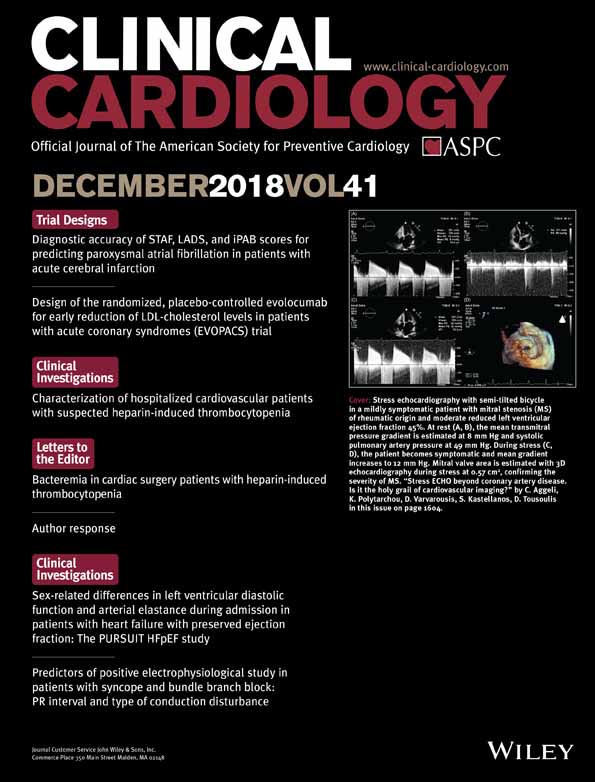Characterization of hospitalized cardiovascular patients with suspected heparin-induced thrombocytopenia
Abstract
Background
Little is known about heparin-induced thrombocytopenia (HIT), a pro-thrombotic, potentially life-threatening immune-mediated reaction to heparin exposure, in conservative and interventional cardiovascular medicine.
Hypothesis
The 4T score, validated for prediction of HIT in surgical patients before, is also suitable for assessing HIT probability in cardiovascular patients with unclear thrombocytopenia.
Methods
A total of 403 consecutive patients from our Department of Cardiology, Angiology and Pneumology in whom a HIT screening test was performed between 2009 and 2016 were identified. All 72 patients with a positive screening test were subjected to a functional confirmation test (heparin-induced platelet activation test, HIPA), resulting in 23 patients with serologically confirmed HIT (positive screening test, positive HIPA) and 49 patients with nonconfirmed HIT (positive screening test, negative HIPA).
Results
The 4TScore had a sensitivity of 82.6% and a specificity of 28.6% in our patients, suggesting that it might not sufficiently predict the clinical probability of HIT in cardiovascular patients. In both confirmed and nonconfirmed HIT, intrahospital mortality was high without a significant difference (30% in confirmed HIT vs 43% in nonconfirmed HIT). Bacteremia was more often found in patients with nonconfirmed HIT, suggesting infection as a frequent differential diagnosis of thrombocytopenia in these patients (49% vs 17%, P = 0.0185).
Conclusion
HIT screening should be initiated in cardiovascular patients with unclear thrombocytopenia despite a low 4Tscore in order to distinguish patients requiring alternative anticoagulants from those with other causes such as infections. Further research is needed to specify the risk profile for HIT in cardiovascular patients.
CONFLICT OF INTEREST
The authors declare no potential conflict of interests.




